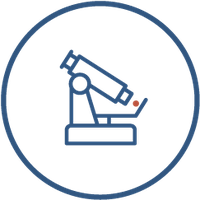BioAscent’s customer is a growing UK-based biotech company. In-house project teams work closely with both internal laboratory-based scientists and a number of external partners.
The customer performs regular screening using mass spectrometry and was looking for a solution to enable the pooling of their custom in-house compound collection, and subsequent production of assay ready plates. This would allow them to move from screening a single compound per well to multiple compounds per well, improving assay throughput and efficiency. The delivery plates needed to be formatted for several different assay types, all produced from the same library collection.
Compounds can either be pooled randomly or in a structured fashion based on their properties. In this case, the customer opted to use random plate-based pooling, which is the most time and cost effective method of compound pooling.
There are several challenges which require consideration when it comes to pooling compounds.
Layout of the final assay-ready plates for delivery:
Assay-ready plates must be formatted correctly for the required assay, and this may mean certain wells need to be left empty. Adjusting the layout from the source plate can result in compounds originally located in, for example, well A1 of the source plate ending up in well P24 of the pool plate. It's crucial to meticulously track each compound throughout the process. In this scenario, compounds must be moved individually using an automated liquid handler instead of simply stamping the plate.
2 different output formats were required for the assay-ready plates, both 384-well and 96-well.
Data management:
It was essential to ensure all compounds were pooled into the correct well with full traceability and audit trail available.
Size of the collection:
The library contains 85K compounds, all of which need to be registered, tracked and documented.
Compounds were delivered to BioAscent as DMSO solutions in 384-well plates from several different suppliers. Although the customer had requested 10 mM solutions to be shipped, some compounds were received as 20 mM DMSO solutions. Our capabilities and automation meant that the team was able to dilute these down to 10 mM without issue. The plates were then aggregated and registered into BioAscent’s Mosaic database.
Working with our customer, a custom workflow was designed to accommodate the creation of both 384-well and 96-well delivery plates. Several of BioAscent’s liquid handlers were used in this workflow:
A master plate was created using the Agilent Bravo automated liquid handler. In this plate, 80 compounds were pooled per well.
A lower volume intermediate plate was then stamped using the Agilent Bravo.
From this intermediate plate, assay-ready plates containing 100nL of pooled compound solution in each well were created using the Beckman Echo 650 acoustic dispenser.
Compound pooling was carried out using traditional liquid handling techniques. Compounds were firstly pooled in larger volumes in an intermediate plate and then transferred to the required assay-ready plate in smaller volume using the Echo 650 acoustic dispenser. By using traditional liquid handling techniques rather than acoustic dispensing for the pooling stage, the process was more efficient, reducing the time taken and keeping costs within the customer’s budget. If required, BioAscent can also pool compounds using our Echo 650 acoustic dispenser.
Our in-house data management experts ensured that throughout the process all individual compounds and plates were tracked using industry-standard Titian Mosaic software in addition to internally developed data management tools.


Working with BioAscent to manage the pooling of their library afforded several benefits for our customer:
Expertise. BioAscent can work with customers to provide a custom number of pooled compounds per well and plate layout, depending on the customer’s budget and requirements. Compounds can be pooled randomly or flexibly pooled based on their properties, for example exact masses.
Flexibility. 3 output plate types were able to be created from one master pooled plate enabling all kinds of assay to be run from one pooled master plate.
Speed. The pooled master plate was retained at BioAscent, allowing further copies to be produced quickly and on-demand when required.
Visibility. Titian Mosaic software ensures an auditable, barcode-driven process with full visibility.
Integrity. At BioAscent’s state-of-the-art compound management facilities, the liquid handlers used for this work are located in dehumidified enclosures which minimise absorption of water by the DMSO solution when the plate is exposed to air. This helps to maintain the integrity of the collection.
Rapid hit confirmation. BioAscent was able to create and store microtubes containing small volumes of pure compound from the original source plates for cherry-picking and fast follow-up of hits without the need to request a resupply of compound.
Cost-effectiveness. Activity-based pricing ensured the customer paid only for the work performed, all while having the benefit of access to BioAscent’s expertise and state-of-the-art infrastructure. This exclusive offering from BioAscent maximises value for the customer, without the need for significant capital investment.
By collaborating with BioAscent, our customer was able to benefit from our expertise in compound management to efficiently pool a large compound collection. To find out more about BioAscent’s compound management services, click here.




